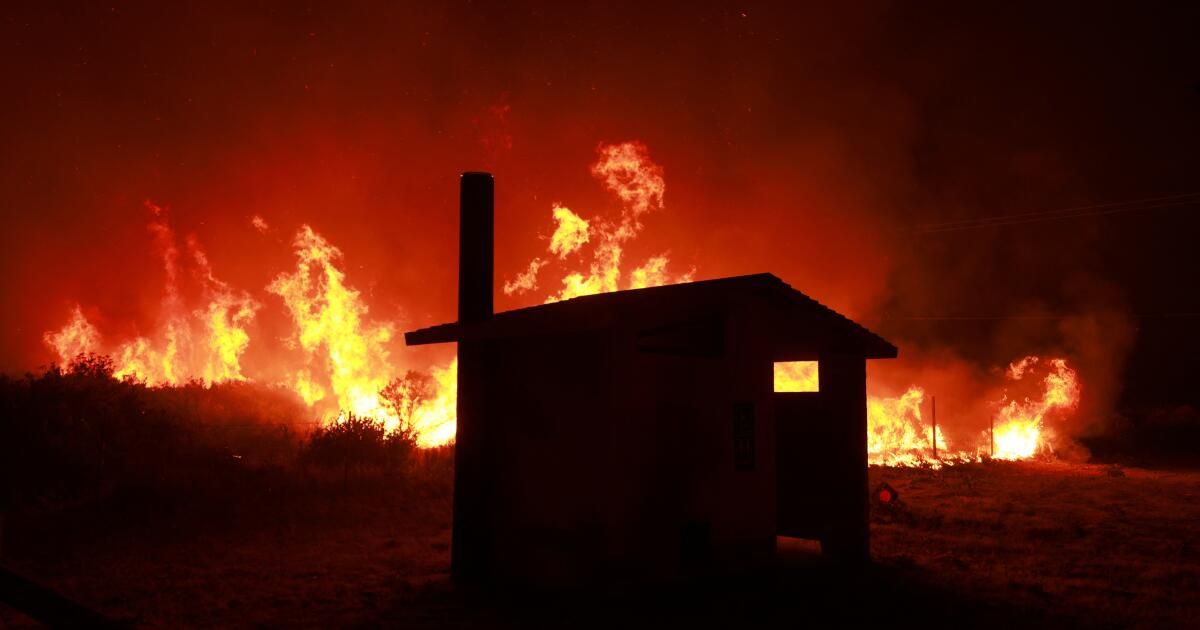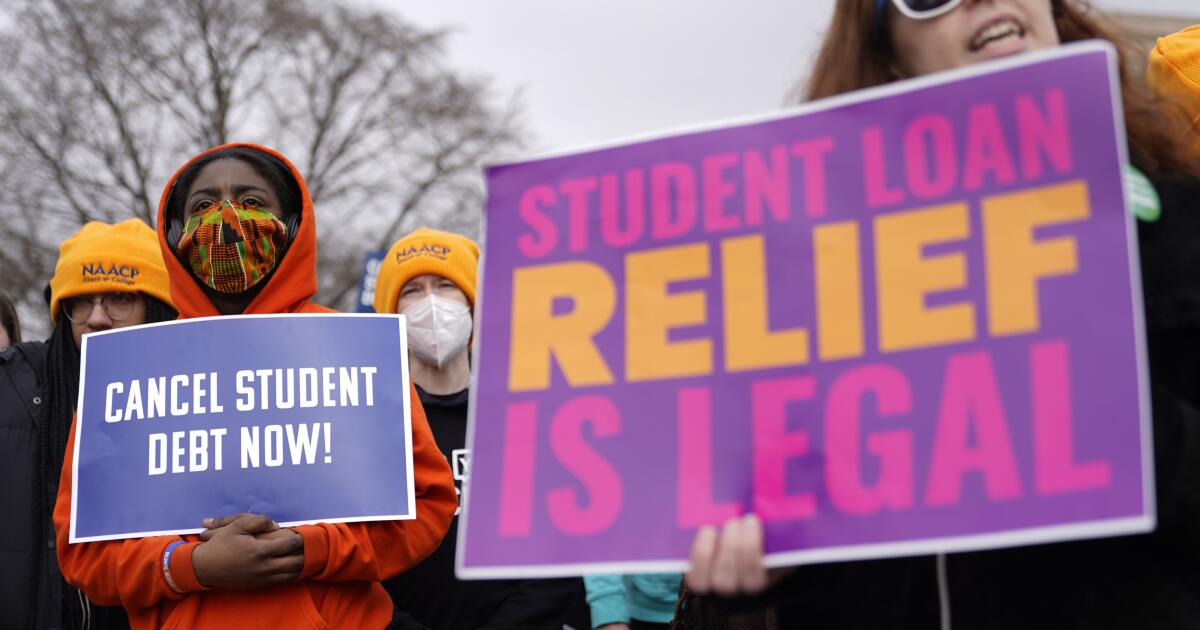Thursday marks the beginning of summer, but the first wildfires have already raged outside Los Angeles and the Bay Area. Many California homeowners find themselves more vulnerable than ever as major insurers abandon areas threatened by fires fueled by climate change. Gov. Gavin Newsom and state Insurance Commissioner Ricardo Lara have responded with efforts to loosen regulations and increase coverage.
Insurance industry representative Rex Frazier argues that state leaders have the right idea: Onerous regulations are making a difficult situation worse. But consumer advocate Jamie Court argues the state needs to take a tougher line in requiring coverage for homeowners who meet fire protection standards.
California's sclerotic insurance bureaucracy isn't helping anyone
By Rex Frazier
As the leader of a homeowners insurers association, I frequently hear from anxious Californians who are losing their coverage and wondering if the situation will improve. My answer is that I am not one of those who believe that California faces an uninsurable future. The problems we face are difficult but they have solutions.
The insurance challenges facing the state today have their roots in the past. While the massive wildfires of 2017 and 2018 had a major impact, forcing insurers to pay out claims equivalent to more than 20 years of profits, the state's insurance problems predate the fires. California's failure to update old rules governing insurance rates has long prevented insurers from preparing for a warmer, drier future.
California's laws are a national outlier. Rules for projecting wildfire losses, a crucial aspect in calculating insurance rates, are a case in point. California is the only state in the country that requires property insurers to project future wildfire losses based on average wildfire losses over the past 20 years, regardless of where they plan to do business. All other states allow insurers to base their rates on where they intend to sell insurance, taking into account the degree of fire risk of the properties they plan to insure.
California is also a national outlier when it comes to rate approval, as it is a “pre-approval” state. That means an insurer must receive approval from the California Department of Insurance before it can increase or decrease rates.
While California law promises a 60-day approval period, it often takes six months or more to obtain permission to change rates. In times of high inflation, slow approvals require insurers to exit higher-risk areas or face financial ruin.
A less visible, but nonetheless critical, issue is the financial well-being of the FAIR Plan, a group of insurers that provides last-resort coverage. The FAIR plan is growing far beyond its ability to pay claims for large fires. And if it runs out of money, it will charge insurers, as members of the pool, a fee on top of its own clients' claims for the same fire. If that rate rises enough, it could devastate insurers. We must address this.
Fortunately, Insurance Commissioner Ricardo Lara has recognized the need to solve these problems. His Sustainable insurance strategy It would update California's rate regulations and approval process while requiring insurers to commit to covering high-risk areas. The proposal is far from perfect, but we look forward to working with all stakeholders to increase the availability of insurance and restore the health of the market.
While state regulations and processes can be changed, we remain vulnerable to forces beyond our control. Inflation makes home repair and reconstruction very expensive, which drives up rates. Longer dry seasons increase the chances of devastating fires, and have the same effect in the short term. We need a system that recognizes these realities.
But raising rates is not a long-term solution. Reducing them over time will require consensus on how to manage fuels near valuable properties.
That will take a lot of time and effort. California homeowners insurers are ready to do our part to ensure an insurable future for the state.
Rex Frazier is the president of the Personal Insurance Federation of California.

Newsom should take care of homeowners, not insurance companies
By Jamie Court
Home insurance companies have put Californians in a bind by refusing to sell new or renew policies to many customers, leaving them with few coverage options. What's wrong with it prompted more homeowners to opt for the high-cost, low-benefit FAIR Plan.a group of insurers required to provide last resort coverage.
Governor Gavin Newsom recently announced legislation to allow insurance companies to raise rates more quickly in an effort to attract them back to the state. While that will certainly cause Californians to pay higher rates, it's not likely to cover more people.
Insurance companies refuse to issue new policies despite recent significant rate increases: an average of 20% for State Farm and 37% for farmers, for example. What has them scared is greater exposure through the FAIR Plan, which covers more and more expensive homes in wildfire-prone areas. Insurers are on the hook for FAIR Plan claims and their exposure increases with market participation, so they limit their participation.
This will only be solved by releasing people from the FAIR Plan. The most practical way to do this is to require insurers to cover people who protect their homes from fire. We have mandatory health and auto insurance, so why shouldn't we have it for compliant homes?
Hardening is expensive enough that most homeowners are unlikely to do it without guaranteed coverage. Therefore, requiring insurance is the best way to mitigate wildfire risks.
Mitigation efforts are already working and major incidents have decreased in recent years. Additionally, insurers recovered billions from utilities responsible for significant fire losses in 2017 and 2018.
The current crisis was precipitated not so much by wildfires but by investment losses and rising construction costs. Insurers responded by tightening underwriting and raising rates.
The insurance companies got their raises, but they refuse to write new business here until they get more. Unfortunately, Newsom and Insurance Commissioner Ricardo Lara are willing to give them what they want.
Last week, Lara proposed regulations trying to address the crisis. Echoing a legislative proposal that failed last year, they would allow companies to raise rates based on black-box climate models. Florida tried a similar approach and its rates are now about double those of California. Florida's insurer of last resort covers 20% of its homeowners, about five times the proportion in California.
The proposed regulations seek to require insurers to increase sales to homeowners in “distressed areas” by 5%. However, they would not be required to charge prices that consumers can afford. The requirement to cover these areas could also be waived if an insurer demonstrates that it is “taking reasonable steps to meet its insurer's commitment.” And the plan gives companies two years to comply, but allows them to start charging all policyholders higher rates immediately.
Newsom applauded the proposal, essentially arguing that California's insurance rates are too low. He did not mention that California insurers' profits have generally exceeded the national average for the last 20 years.
Newsom's latest legislative proposal would limit public participation in rate-setting by eliminating so-called interveners like Consumer Watchdog, which can challenge unnecessary increases and has saved consumers. more than 6 billion dollars in 22 years.
Throwing more money at insurers will not end the crisis; requiring them to cover the will of the responsible owners.
Jamie Court is the president of the nonprofit organization Consumer Watchdog.












